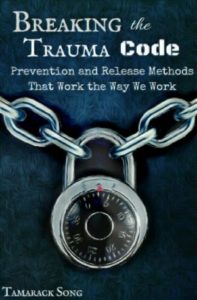by Tamarack Song
A central theme of this book is to separate the trauma from its story. The two of them mix like oil and water, as our trauma memory is somatic, wordless, and permanent, and our trauma story is conscious, verbal, and changeable. The story, rooted in our explicit memory, keeps us focused on who did what to whom and why.
When I take personal responsibility, I am no longer limited by the who, what, and why. Our healing is now our work, not somebody else’s. By taking responsibility, we eliminate the inevitable dead-end that we come to when we rely on others. The people involved in our trauma change over time, their memories may differ from mine, they may be unavailable, or they may no longer be alive.
The same is true of my memory of the experience, which is probably inaccurate or incomplete. The circumstances might have changed, and certainly we have. The longer it’s been, the more our explicit memory alters the story. Add to this the fact that trauma memories are somatic, and no true trauma healing can be story-based.
When we let go of the story, we allow ourselves to see things differently. Our trauma memory no longer has a direct connection with our grandfather or the circumstances – it is just a memory. Now we can embrace it for what it is to us now. Over time, this lessens our disdain for grandfatherly figures.
We can then consciously engage in our healing process by enacting a new script, such as getting to know grandfatherly figures as individuals rather than images. As well, we free ourselves to go down deep into our timeless, wordless self, where our trauma memory dwells.
Check out the table of contents here.

